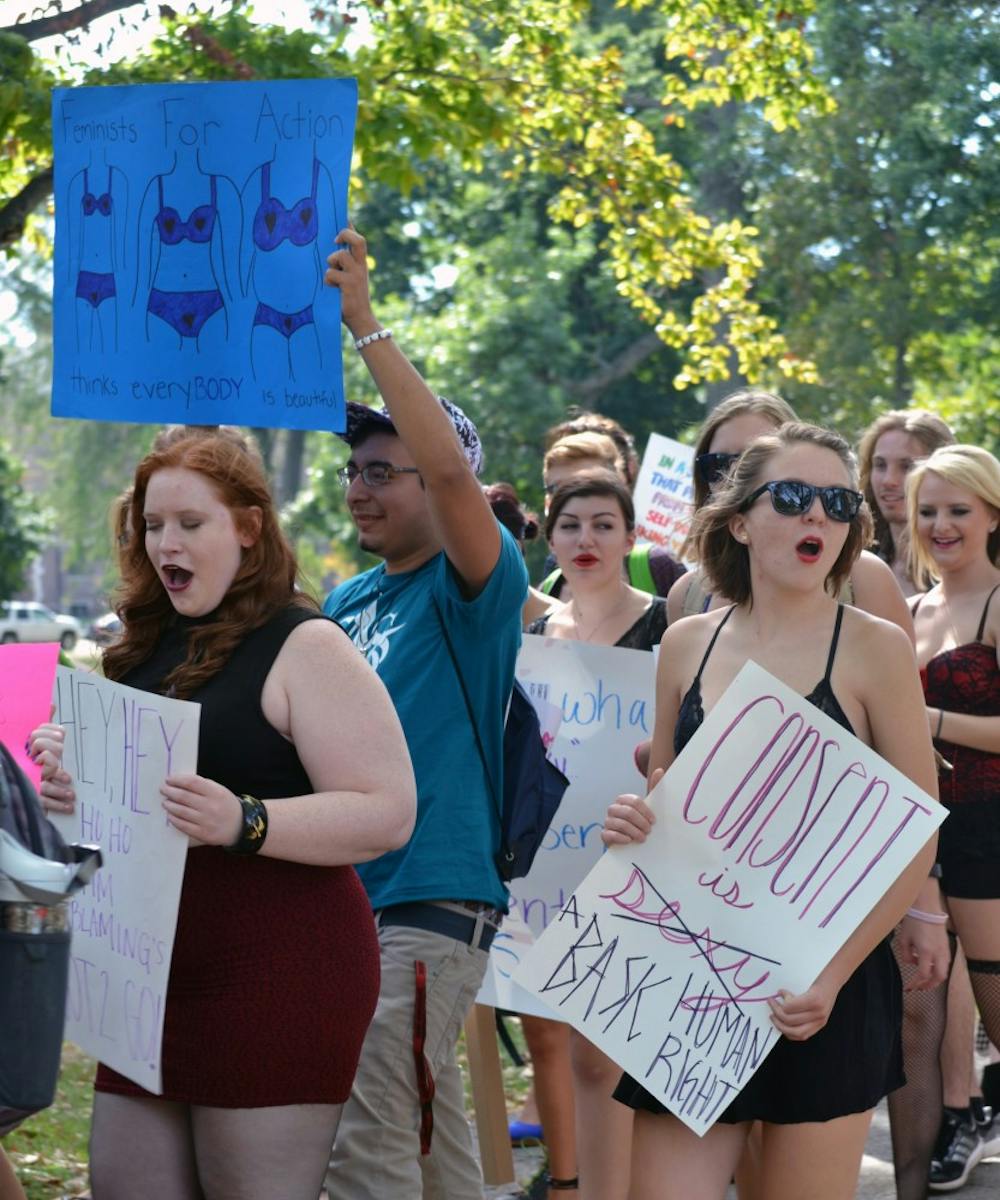Feminism is one of the most prevalent ideologies and activist movements guiding Millennials, particularly (and perhaps predictably) Millennial women. According to HerCampus’s 2015 Feminism on Campus Survey, 78 percent of college women in the United States identify as feminists. Today’s feminists, however, are unique in that their goal is not just gender equality, but creating a more just and equitable world for all marginalized groups.
Despite its widespread popularity, a cohesive profile of feminism is difficult to pin down. “There’s not one definition,” Erica Somerson, Vice President of Feminists for Action (FA) at Ball State University, said, “it means something different to everyone.”
Erica started exploring the ideals of feminism after her junior year in high school. She attended an engineering camp with only three female participants; the rest of the attendees were male. Despite her competent skills, she says the guys in her group told her just to work on the slide presentation.
“They used my idea and didn’t give me credit for it. So, come time to present to all the families, I was the only one who knew what to say,” Erica remembers. That was when she realized, something isn’t quite right in our society. “I was not welcome in a place where I was thriving, you know?”
FA represents a new type of feminism which evolved from roots during the pre-Civil War Era. Efforts by figures like Susan B. Anthony and Elizabeth Cady Stanton finally resulted in suffrage for women in 1919. The second wave of feminism began in the 1950s as women fought against gender norms confining them to domestic roles. In the 1990s a third feminist era broadened the focus to other marginalized groups of women.
Today’s feminism is governed primarily by one ideal — inclusion — which is closely tied to the 1990s holistic view of people’s rights. “The third wave is really about the big picture,” says Dr. Courtney Jarrett, a Ball State professor in the Women’s and Gender Studies Department. She is also the faculty coordinator for the Ball State chapter of FA.
Not everyone agrees on what current wave of feminism exists; while some think we have moved into a fourth wave, others believe the third wave that began in the 1990s is still in effect.
“I think the key aspect to feminism today is that it’s intersectional, which means we are looking at how different forms of oppression intersect,” said Erica. “So it’s not just saying, hey, we need gender equality, it’s saying, ‘How is that gender equality impacted by race, color, ethnicity, religion, age, ability, and all other social constructs?'”
In recent years the movement has reached out to women of different ethnicities, races, and sexual identities. Support has increased for trans women in particular, and with good reason. Seventy-two percent of anti-LGBTQ homicides are carried out against transgender women; eighty-nine percent of those are transgender women of color.
Additionally, the wage gap exists not only between men and women, but is further segregated by race. In 2013, African American women made 64 percent of a white male’s income, with Hispanic women taking home 55 percent. White women, on the other hand, made 78 percent.
By focusing on the effects of intersecting forms of oppression, Millennial feminists are working toward a more equal society for all, not just between men and women. An article from Stanford’s Clayman Institute for Gender Research said young feminists see themselves as a part of a larger student movement, looking for justice for all – not just women.
The intersectional movement also works to correct mistakes made by previous generations of feminists. In the past, white, wealthy, middle-class women pursued agendas that were progressive, but more narrow-minded. Because of this, today’s feminist movement can sometimes be misunderstood as non-inclusive to people more familiar with its past.
Despite the emphasis on inclusion and the high rates of college women identifying as feminists, there is one group that still hasn’t quite found its place in the feminist movement: Millennial men.
To continue reading, visit BallBearingsMag.com





